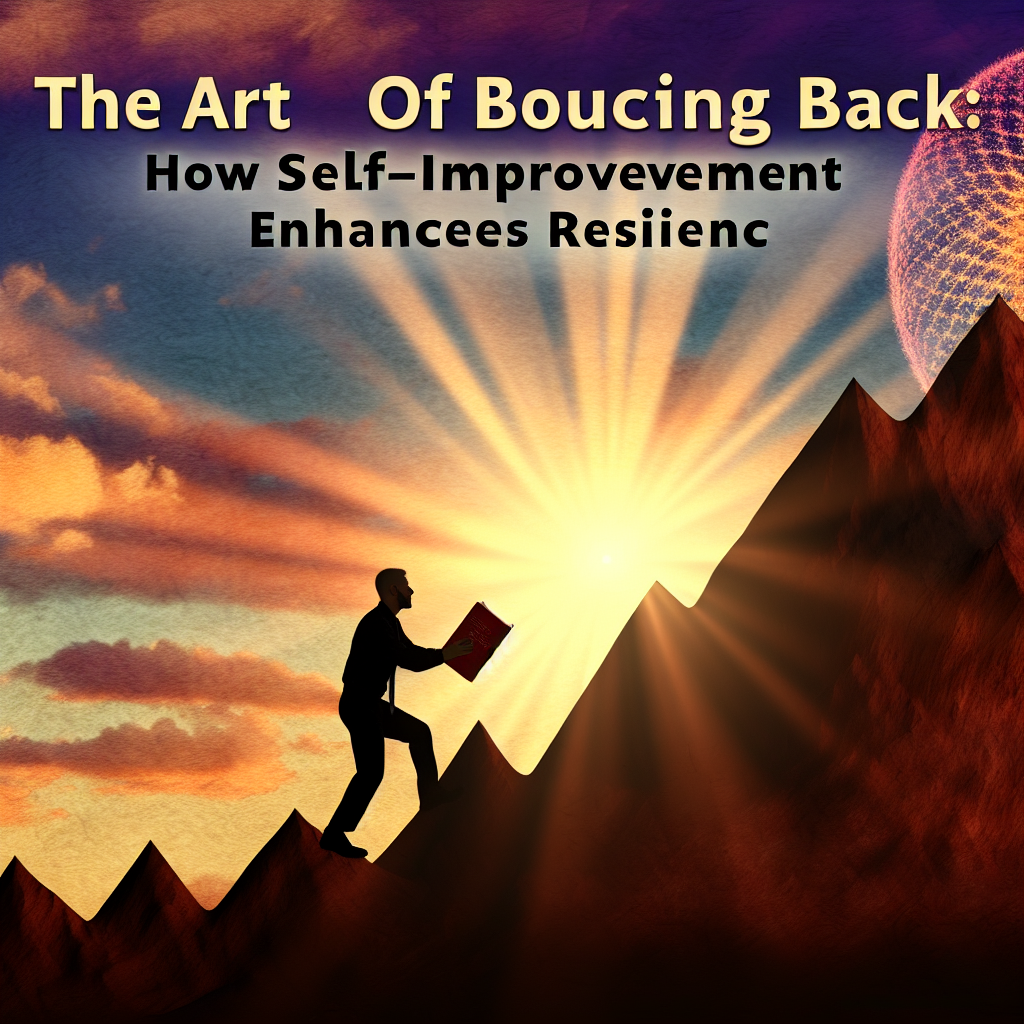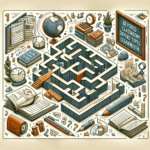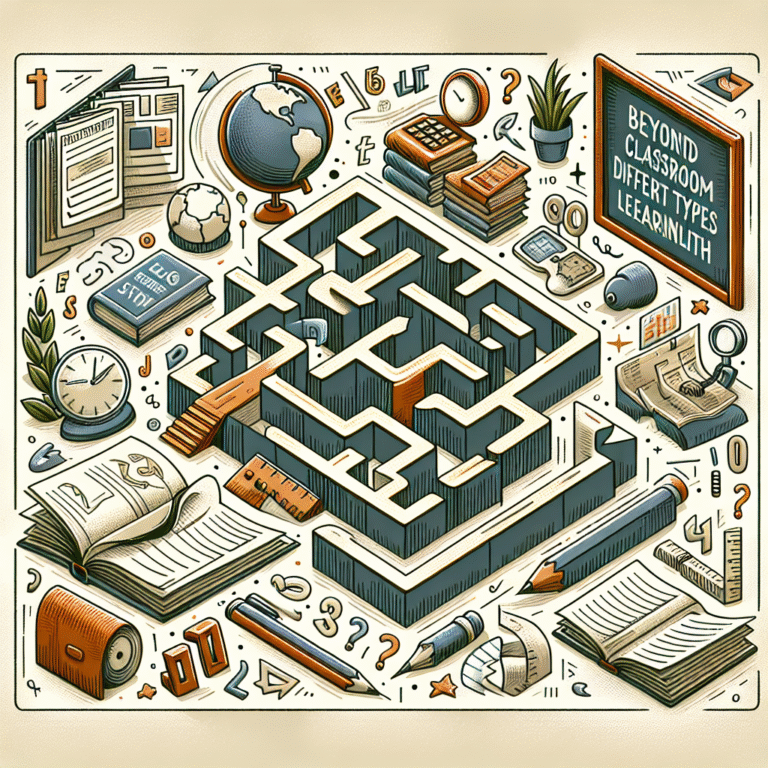
The Art of Bouncing Back: How Self-Improvement Enhances Resilience
Introduction
Life is an unpredictable journey filled with peaks of success and valleys of setbacks. In today’s fast-paced world, the ability to navigate these ups and downs is essential. Have you ever found yourself facing challenges that felt insurmountable? Whether it’s personal losses, career setbacks, or emotional struggles, developing resilience can be the key to bouncing back stronger than ever. This article delves into The Art of Bouncing Back: How Self-Improvement Enhances Resilience, exploring how cultivating resilience can significantly transform your life.
Understanding Resilience
Before we discuss self-improvement techniques to enhance resilience, it’s crucial to understand what resilience is. Resilience is often defined as the ability to withstand or recover quickly from difficult conditions. It’s not merely about enduring hardships; it’s about learning and growing from them.
Characteristics of Resilient Individuals
Resilient individuals share key characteristics that allow them to navigate life’s challenges:
- Positive Outlook – They maintain a hopeful perspective despite difficulties.
- Emotional Awareness – They acknowledge and understand their emotions, leading to better management.
- Flexibility – Adaptable to change, allowing them to find alternative solutions.
- Strong Social Networks – They cultivate supportive relationships that provide help during tough times.
Incorporating self-improvement strategies can help anyone develop these characteristics, empowering them to become more resilient.
The Connection Between Self-Improvement and Resilience
Self-improvement involves conscious efforts to enhance one’s skills, mindset, and behaviors. The relationship between self-improvement and resilience is direct; as individuals work on themselves, they become better equipped to handle adversity.
Case Study 1: J.K. Rowling
One of the most famous examples is J.K. Rowling, who faced numerous rejections before Harry Potter became a global phenomenon. Instead of giving up, Rowling took the rejection as a learning experience, ultimately shaping her writing and resilience. Her journey illustrates The Art of Bouncing Back: How Self-Improvement Enhances Resilience, as her dedication to self-reflection allowed her to overcome personal and professional hardships.
Analyzing J.K. Rowling’s Journey
Rowling’s story is a perfect case study in resilience arising from self-improvement. Her perseverance through despair and failure not only improved her craft but also built her emotional resilience. She learned from her experiences rather than allowing them to defeat her, becoming an inspiring figure for millions.
Techniques for Enhancing Resilience through Self-Improvement
Let’s explore several valuable self-improvement techniques that can effectively enhance resilience.
1. Embracing Mindfulness
Mindfulness practices, such as meditation, encourage individuals to live in the present and cultivate awareness. Studies show that mindfulness can significantly reduce stress and improve emotional regulation.
| Benefit | Impact on Resilience |
|---|---|
| Reduces Stress | Lowers anxiety and promotes calmness |
| Enhances Emotional Control | Better management of emotional reactions |
| Increases Self-Awareness | Encourages introspection and growth |
2. Building Strong Social Connections
Nurturing relationships can provide emotional support during difficult times. Investing time in friends and family fosters a network that facilitates resilience.
3. Setting Achievable Goals
The act of setting and accomplishing small goals builds confidence. As individuals begin to see progress, they foster a sense of agency that enhances their overall resilience.
4. Developing a Growth Mindset
A growth mindset, as proposed by psychologist Carol Dweck, involves viewing challenges as opportunities for growth. This perspective is essential in The Art of Bouncing Back: How Self-Improvement Enhances Resilience, as it promotes persistence and adaptability.
Case Study 2: Thomas Edison
Consider Thomas Edison, who once stated, "I have not failed. I’ve just found 10,000 ways that won’t work." This quote epitomizes the growth mindset—embracing failure as a stepping stone to success. Edison’s relentless pursuit of innovation showcases resilience through the lens of self-improvement.
Analysis of Edison’s Mindset
Edison’s life exemplifies how adopting a growth mindset fosters resilience. Instead of viewing failures as setbacks, he approached them as learning opportunities, making him a pioneer in innovation.
The Role of Self-Reflection in Resilience
Self-reflection is a powerful tool that aids in understanding one’s experiences. Regularly assessing your thoughts, feelings, and actions can provide insights that fuel self-improvement.
Journaling as a Tool
Journaling can help individuals process emotions and experiences, leading to enhanced resilience. By documenting challenges and reflecting on them, you develop a deeper understanding of how to cope and grow.
Structure of Reflective Journaling
| Component | Description |
|---|---|
| Challenge Description | Detail the event or struggle |
| Emotions Felt | Reflect on your emotional responses |
| Lessons Learned | Identify insights and growth |
Creating a Resilience-Building Action Plan
An effective way to enhance resilience is to create a tailored action plan that incorporates the learned self-improvement strategies.
Steps in Crafting Your Plan
- Identify Challenges – Reflect on past challenges that tested your resilience.
- Set Specific Goals – Create SMART (Specific, Measurable, Achievable, Relevant, Time-Bound) goals related to your self-improvement journey.
- Implement Strategies – Include mindfulness practices, networking opportunities, and growth mindset techniques in your daily routine.
- Monitor Progress – Regularly assess your progress and make necessary adjustments.
The Science Behind Resilience
Research shows that resilience can be cultivated through a variety of methods. Studies indicate that both genetic predispositions and environmental factors influence one’s resilience. A comprehensive approach to self-improvement can help individuals strengthen their resilience over time.
Case Study 3: The Psychology of Resilience
Psychologist Ann Masten describes resilience as “ordinary magic.” Her work emphasizes that resilience is not a trait but rather a process individuals undergo throughout their lives. This understanding is vital in The Art of Bouncing Back: How Self-Improvement Enhances Resilience, as it suggests that anyone can build resilience through effort.
Summary of Masten’s Findings
Masten’s research illustrates that resilience is influenced by multiple factors, including social support, individual temperament, and learned coping skills. Thus, self-improvement initiatives can be tailored to address these various components.
Inspiring Real-World Examples of Resilience
Resilience isn’t solely found in famous figures like J.K. Rowling or Thomas Edison; it exists in everyday individuals. Here, we highlight inspiring stories that reinforce the essence of The Art of Bouncing Back: How Self-Improvement Enhances Resilience.
Example 1: A Cancer Survivor’s Journey
Consider a cancer survivor who, after battling the disease, becomes an advocate for others facing similar challenges. Through self-improvement initiatives like public speaking and fitness training, they not only reclaim their health but also uplift others.
Example 2: An Entrepreneur’s Comeback
An entrepreneur who faces bankruptcy may pivot their business model through extensive learning and networking, ultimately creating a successful enterprise. Their journey encapsulates resilience fostered through self-improvement.
Conclusion
The Art of Bouncing Back: How Self-Improvement Enhances Resilience is essential for everyone striving to thrive amidst life’s adversities. By focusing on self-improvement, we empower ourselves to weather storms and emerge even stronger.
Actionable Insights
- Practice Mindfulness Daily – Incorporate short meditation sessions into your routine.
- Cultivate Relationships – Dedicate time to build and maintain your social networks.
- Set Your Goals – Start with small, achievable targets that lead to larger ambitions.
- Embrace a Growth Mindset – View setbacks as opportunities for learning and growth.
With these strategies, you possess the tools necessary to enhance your resilience and lead a fulfilling, empowered life.
FAQs
1. What is resilience?
Resilience is the ability to recover swiftly from difficulties, adapting and thriving in the face of adversity.
2. Can anyone become more resilient?
Yes! Resilience is a skill that can be developed through consistent self-improvement.
3. How does mindfulness improve resilience?
Mindfulness helps individuals remain present, reducing stress and promoting emotional regulation.
4. What role does social support play in resilience?
Strong social connections provide emotional support during tough times, enhancing overall resilience.
5. How can I start my self-improvement journey?
Begin by reflecting on your challenges, setting specific goals, and implementing strategies that resonate with you.
By understanding The Art of Bouncing Back: How Self-Improvement Enhances Resilience, you are better equipped to embark on your journey of personal growth and resilience.














